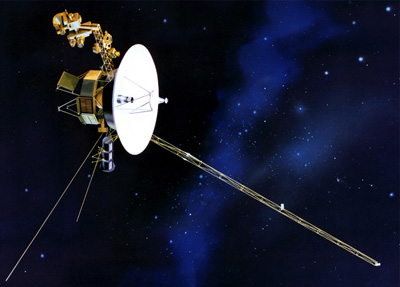Did NASA's Voyager 1 reach interstellar space?
 Washington, July 24 : Researchers have recently raised questions regarding Voyager 1 not reaching in the interstellar space, after it was announced in 2012 that the spacecraft has traveled further from Earth than any other manmade object.
Washington, July 24 : Researchers have recently raised questions regarding Voyager 1 not reaching in the interstellar space, after it was announced in 2012 that the spacecraft has traveled further from Earth than any other manmade object.
Some scientists have said that the spacecraft was still within the heliosphere, the region of space dominated by the Sun and its wind of energetic particles and has not yet reached the space between the stars. However, two Voyager team scientists have developed a test that claimed could prove once and for all if Voyager 1 has crossed the boundary.
The scientists predicted that, in the next two years, Voyager 1 would cross the current sheet, the sprawling surface within the heliosphere where the polarity of the sun's magnetic field changes from plus to minus and if it would detect a reversal in the magnetic field, it would prove that it was still within the heliosphere. But, if the magnetic field reversal doesn't happen in the next year or two as expected, then it would be confirmed that Voyager 1 has already passed into interstellar space.
George Gloeckler, a professor in atmospheric, oceanic and space sciences at the University of Michigan in Ann Arbor has worked on the Voyager mission since 1972 and has been a vocal opponent of the view that Voyager 1 has entered interstellar space as it has observed many signs indicating, like cosmic rays, although it did not see a change in magnetic field that many were expecting.
Gloeckler said that this controversy would continue until it was resolved by measurements.
Ed Stone, of the California Institute of Technology in Pasadena and NASA's Voyager Project Scientist said in a statement that it was the nature of the scientific process that alternative theories could develop in order to account for new observations.
The study is published in Geophysical Research Letters, a journal of the American Geophysical Union. (ANI)